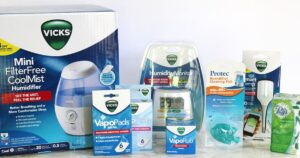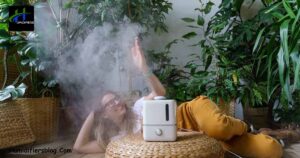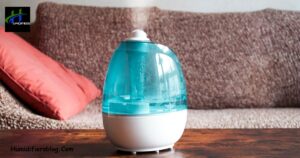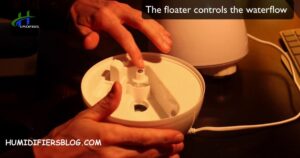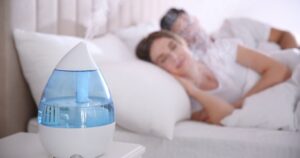Mold in a humidifier refers to the growth of fungal spores in the water reservoir or on internal components, facilitated by the humid environment. It can lead to poor air quality and potential health risks when released into the air. Persistent mold in a humidifier not only compromises air quality but can also damage the appliance, reducing its effectiveness.
Dread lingers in the silent mist as unseen invaders, mold spores, find refuge within your unsuspecting humidifier. The very device meant to nurture comfort becomes a breeding ground for stealthy intruders, jeopardizing both air purity and well-being. Unmask the hidden threat, discover What Does Mold In Humidifier Look Like? and reclaim your sanctuary from the encroaching specter of mold.
It may present itself as dark specks or patches on surfaces, often resembling a slimy or fuzzy texture. The colors it takes on can range from black to green or brown. It is crucial to conduct regular inspections and cleaning to promptly detect and address any visible indications of mold in the humidifier, mitigating potential health risks and ensuring continued air quality.
Identifying Mold in Your Humidifier
It provides insights into the visual characteristics of mold, such as dark specks or fuzzy patches, and educates users on potential color variations like black, green, or brown. The information empowers individuals to conduct regular inspections and take proactive measures to maintain a healthy and mold-free humidifier.
Looking for Signs
It involves inspecting your humidifier for any dark spots or patches, which might indicate the presence of mold. Additionally, feeling for slimy or fuzzy textures on the surfaces can also serve as a clue to potential mold growth. This proactive approach helps in early detection, ensuring a healthier environment and efficient humidifier performance.
Colors of Mold
It refers to identifying the hues of mold in your humidifier, such as black, green, or brown. Each color can provide insights into the specific type of mold present. Recognizing these colors empowers you to take informed actions to address mold issues and maintain a clean, healthy humidifier environment.
Easy Checks
It involve simple and regular inspections of your humidifier. By looking closely and noticing any dark spots, patches, or unusual textures, you can quickly identify potential mold issues. Promptly addressing these signs through regular cleaning ensures a mold-free environment, promoting optimal air quality in your living space.
Common Areas of Mold Growth
Common areas of mold growth in humidifiers include the water reservoir, humidifier filters, and internal components like vents and ducts. Stagnant water in the reservoir provides an ideal breeding ground, while filters and internal parts may trap moisture, fostering mold development. Regular inspection and cleaning of these areas are crucial to prevent mold and ensure a healthy humidifier environment.
Water Reservoir
The water reservoir in a humidifier is a prime area for mold growth due to the consistent presence of moisture. Stagnant water in this compartment provides an ideal breeding ground for mold spores, posing a potential threat to indoor air quality. Regular cleaning and proper maintenance of the water reservoir are essential to prevent mold formation.
Humidifier Filters
Humidifier filters are susceptible to mold growth as they trap moisture and impurities during operation. Over time, this damp environment becomes conducive to the development of mold, potentially compromising air quality. Regular inspection and timely replacement of filters are vital measures to prevent mold buildup and maintain a healthy humidifier.
Humidifier Vents and Ducts
Humidifier vents and ducts, often overlooked, can foster mold growth in their enclosed spaces due to trapped moisture. The warm and humid conditions create an ideal environment for mold spores to proliferate and circulate through the ventilation system. Regularly checking and cleaning these areas are essential steps to curbing mold development.
Internal Components
The internal components of a humidifier, including fans and tubing, are susceptible to mold growth due to accumulated moisture. Mold can thrive in these hidden areas, compromising air quality when released into the mist. Ensuring proper ventilation and maintaining a well-ventilated room can further minimize the risk of mold growth in a humidifier.
Mist Dispersion Mechanism
The mist dispersion mechanism in a humidifier, responsible for releasing moisture into the air, can become a potential site for mold growth. Moist conditions within this component may foster mold development, affecting the quality of the mist emitted.
Humidifier Exterior
While often overlooked, the exterior of a humidifier is not immune to mold growth, especially in high-humidity environments. Mold may develop on the outer surfaces, potentially compromising the overall cleanliness of the device. Regular cleaning and wiping of the humidifier exterior help prevent mold buildup, promoting a hygienic and effective operation.
Surrounding Environment
Maintaining a clean humidifier is essential to prevent mold growth and optimize its performance. Clean A Humidifier regularly to address the impact of high room humidity, which can elevate moisture levels and create favorable conditions for mold development.
Mold not only affects the efficiency of the humidifier but also poses health risks. It is crucial to incorporate routine cleaning as a preventive measure. By incorporating proper room ventilation and controlling ambient humidity, you can effectively reduce the likelihood of mold formation and ensure the longevity and effectiveness of your humidifier.
Health Risks Associated with Mold in Humidifiers

- Inhaling mold spores released by humidifiers can trigger or exacerbate respiratory problems, leading to coughing, wheezing, or difficulty breathing.
- Individuals may experience allergic reactions to mold, manifesting as sneezing, nasal congestion, itchy eyes, or skin irritation when exposed to contaminated air.
- Prolonged exposure to mold in humidifiers can cause skin issues, including redness, itching, or rashes, particularly in individuals with sensitive skin.
- Mold inhalation can worsen asthma symptoms, potentially triggering asthma attacks and causing increased bronchial inflammation.
- Long-term exposure to mold may contribute to chronic health issues, making it imperative to address and prevent mold growth in humidifiers for overall well-being.
Chalky Crust Around Humidifier is Scale with Mold
The humidifier’s chalky mineral deposits provide a place for mold to grow around the machine. This flaky crust enables additional fungal growth on the humidifier. Mineral scale that accumulates on humidifiers forms a chalky, crusty coating. This white, brittle layer is from tap water residues as moisture evaporates over time.
The porous, calcified film allows mold spores a place to attach and multiply around the humidifier. So the chalky crust of scale actually fuels further mold expansion. That’s why descaling is so important – to remove the mineral buildup so mold has less area for proliferation.
Preventive Measures and Maintenance Tips

The preventive Measures and Maintenance Tips are essential for maintaining a healthy humidifier and preventing mold growth. Regularly cleaning components, using distilled water, and timely filter replacements ensure optimal performance. Proactive inspections, proper ventilation, adherence to manufacturer guidelines, and strategic placement further contribute to a mold-free environment and prolonged humidifier functionality.
Regular Cleaning Procedures
Establish a routine for cleaning humidifier components, including the water reservoir, filters, and internal parts, to prevent mold buildup. Regular cleaning not only ensures optimal performance but also promotes healthier air quality. Make sure to use mild cleaning agents and follow a systematic approach.
Using Distilled Water
Opt for distilled water instead of tap water to reduce mineral deposits and microbial growth, minimizing the conditions conducive to mold. Choosing distilled water helps maintain a cleaner and more efficient humidifier. Remember to check water quality regularly and consider using demineralization cartridges if necessary.
Proactive Inspections
Conduct frequent visual inspections to detect any signs of mold, such as dark spots or unusual textures, and address them promptly. Proactive inspections are key to identifying and resolving mold issues before they escalate. Take extra care to inspect often-overlooked areas like vents and ducts.
Timely Filter Replacements
Replace humidifier filters according to the manufacturer’s recommendations to maintain optimal efficiency and reduce the risk of mold growth. Timely filter replacements ensure consistent air quality and minimize the potential for mold contamination. Keep a schedule or set reminders to replace filters promptly.
Proper Ventilation
Ensure adequate room ventilation to discourage the accumulation of excess moisture, a key factor in mold development. Proper ventilation contributes to a healthier indoor environment and diminishes conditions favorable to mold growth. Consider using exhaust fans and opening windows to enhance airflow.
Following Manufacturer Guidelines
Adhere to the manufacturer’s guidelines for your specific humidifier model regarding cleaning frequency, recommended cleaning agents, and maintenance practices. Following these guidelines ensures the longevity of your humidifier and mitigates potential mold-related issues. Refer to the user manual for specific care instructions.
Humidifier Placement

Place the humidifier in a location with good air circulation and away from sources of contamination, minimizing the risk of mold growth. Strategic placement enhances the effectiveness of the humidifier while reducing the likelihood of mold formation. Avoid placing it near electronic devices and ensure it is easily accessible for regular maintenance.
Frequently Asked Questions
What are the visual signs of mold in a humidifier?
The visual signs of mold in a humidifier include dark specks or patches on surfaces, accompanied by slimy or fuzzy textures, and variations in colors such as black, green, or brown.
What does black mold in a humidifier indicate?
Black mold in a humidifier indicates a specific type of mold and may pose more severe health risks, necessitating prompt attention for a healthier indoor environment.
Are there specific types of humidifiers more prone to mold growth?
Any humidifier, regardless of type, can be prone to mold growth if not properly maintained; however, ultrasonic and impeller humidifiers may require extra attention.
Final Thoughts
Understanding What Does Mold in Humidifier Look Like? is crucial for maintaining a healthy indoor environment. Dark spots, fuzzy textures, and various colors serve as indicators of potential issues in the device. Regular maintenance, encompassing component cleaning, the use of distilled water, and timely filter replacements, is fundamental.
Proactively inspecting, ensuring proper ventilation, following guidelines, and strategic placement all contribute to effective prevention. These collective measures guarantee optimal humidifier functionality, minimizing the risk of mold growth and supporting improved air quality. Being attentive to visual cues and adopting preventive practices ensures a mold-free, efficient humidifier, creating a conducive and healthy living space.

